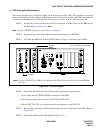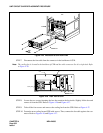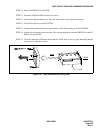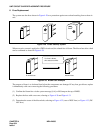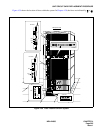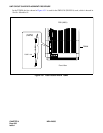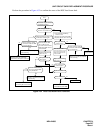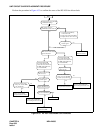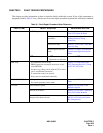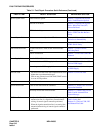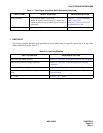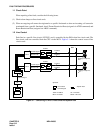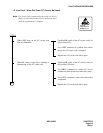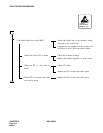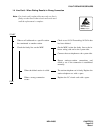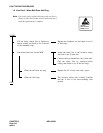
NDA-24300 CHAPTER 5
Page 309
Issue 1
CHAPTER 5 FAULT REPAIR PROCEDURES
This chapter provides information on how to repair the fault(s) within the system. If any of the components or
equipment listed in Table 5-1 has a failure, move on to the repair procedure explained for each faulty condition.
Table 5-1 Fault Repair Procedure Quick Reference
FAULTY ITEM FAULTY SITUATION REFERENCE SECTION
Line Fault DP/PB Telephone Dial tone is not heard. Section 1.3, Line Fault - When Dial
Tone (DT) Cannot Be Heard
Dialing results in a wrong
connection.
Section 1.4, Line Fault - When
Dialing Results in Wrong
Connection
Bell does not ring. Section 1.5, Line Fault - When Bell
Does Not Ring
Answer/speech cannot be
made.
Section 1.6, When Call Cannot Be
Answered and Speech Cannot Be
Made
D
term
• D
term
cannot be operated.
• Operations are abnormal.
Section 1.7, D
term
Fault
Trunk Fault • No connections can be set up.
• PB/DP signals are erroneously received or set out
from ORT/SND.
• No three-way calling can be made on CFT, or noise
gets in a established connection.
• A connection results in no speech.
• Noise gets in a established connection.
Section 2.3, Trunk (ORT, SND,
CFT) Fault and Section 2.4, Trunk
(COT, TLT, DTI) Fault
ATTCON/DESKCON • No speech can be made.
• No control operations can be made.
Section 3.3, ATTCON/DESKCON
Fault
Unit Fault Faults related to speech. Section 4.2, Unit Fault - Fault
Related to Speech
Dial tone is not heard. Section 4.3, Unit Fault - When Dial
Tone (DT) Cannot Be Heard
The ACT MUX card side has become faulty and system
changeover has been executed.
Section 4.4, Unit Fault - ACT-Side
MUX Card Is Faulty and System
Has Changed Over



